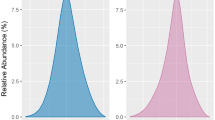Abstract
Background: Fondaparinux sodium is a novel antithrombotic agent, the first of a new class of selective factor Xa inhibitors. It has favourable pharmacokinetics including 100% bioavailability, low variability and a mean terminal half-life of 17 hours for young and 21 hours for elderly healthy volunteers, enabling once-daily administration. Studies on the prevention of venous thromboembolism (VTE) after orthopaedic surgery demonstrated significantly improved efficacy over the low-molecular-weight heparin enoxaparin, with a >50% reduced risk of VTE and a similar safety profile.
Objective:To investigate the in vitro binding of fondaparinux sodium to purified antithrombin III (ATIII) and other plasma proteins.
Methods: Fondaparinux sodium was incubated with human plasma, anti-thrombin-depleted plasma or purified human plasma proteins, including anti-thrombin, α1-acid glycoprotein, serum albumin and immunoglobulin. Non-protein-bound fondaparinux sodium was determined using a validated chromogenic assay method, enabling the calculation of the free fraction of fondaparinux sodium and its binding parameters.
Results: At steady state, fondaparinux sodium at therapeutic concentrations [i.e. those attainable in the prevention (0.14 to 0.50 mg/L) and treatment (up to approximately 2 mg/L) of VTE] was extensively bound (>97%) to plasma proteins and specifically bound (>94%) to purified ATIII. The specific binding parameters Bmax (binding capacity) and KD (dissociation constant) were similar for human plasma (Bmax = 2072 nmol/L, KD = 28 nmol/L) and purified ATIII (Bmax = 1627 nmol/L and KD = 32 nmol/L). There was no specific binding of fondaparinux sodium to other purified plasma proteins.
Conclusion: At clinically relevant concentrations, fondaparinux sodium is highly and specifically bound to ATIII in human plasma, suggesting that potential interaction with drugs via albumin or α1-acid glycoprotein displacement is unlikely.







Similar content being viewed by others
References
Boneu B. New antithrombotic agents for the prevention and treatment of deep vein thrombosis. Haemostasis 1996; 26 Suppl. 4: 368–78
Lormeau JC, Herault JP, Gaich C, et al. Determination of the anti-factor Xa activity of the synthetic pentasaccharide SR90107A/ORG 31540 and of two structural analogues. Thromb Res 1997; 85: 67–75
Walenga JM, Jeske WP, Bara L, et al. Biochemical and pharmacologic rationale for the development of a synthetic heparin pentasaccharide. Thromb Res 1997; 86: 1–36
Keam SJ, Goa KL. Fondaparinux sodium. Drugs 2002; 62(11): 1673–85
Casu B. Structure and biological activity of heparin. Adv Carbohydr Chem Biochem 1985; 43: 51–134
Amiral J, Bridley F, Wolf M, et al. Antibodies to macromolecular platelet factor 4-heparin complexes in heparin-induced thrombocytopenia: a study of 44 cases. Thromb Haemost 1995; 73: 21–8
Gould K, Dembitizer AD, Doyle RL, et al. Low molecular weight heparins compared with unfractionated heparin for treatment of acute deep venous thrombosis: a meta analysis of randomized, controlled trials. Ann Intern Med 1999; 130: 800–9
Leyvraz PF, Bachmann F, Hoek J, et al. Prevention of deep vein thrombosis after hip replacement: randomised comparison between unfractionated heparin and low molecular weight heparin. BMJ 1991; 303: 543–8
Planès A, Vochelle N, Fagola M, et al. Comparison of two low-molecular-weight heparins for the prevention of postoperative venous thromboembolism after elective surgery. Reviparin Study group. Blood Coagul Fibrinolysis 1998; 9: 499–505
Donat FA, Duret JP, Santoni A, et al. The pharmacokinetics of fondaparinux sodium in healthy volunteers. Pharmacokinet 2002; 41 Suppl. 2: 1–9
Boneu B, Necciari J, Cariou R, et al. Pharmacokinetics and tolerance of the natural pentasaccharide (SR90107A/ Org31540) with high affinity to antithrombin III in man. Thromb Haemost 1995; 74: 1468–73
Turpie AG, Gallus AS, Hoek JA. Pentasaccharide Investigators. A synthetic pentasaccharide for the prevention of deep vein thrombosis after total hip replacement. N Engl J Med 2001; 344: 619–25
Lassen MR. Efficacy of the first synthetic factor Xa inhibitor, pentasaccharide Org31540/SR90107A, versus low molecular weight heparin (LMWH) in the prevention of venous throm-boembolism (VTE) following elective hip replacement surgery: the Ephesus study [abstract]. Thromb Haemost 2001; 86 Suppl.: OC45
Bauer K. Efficacy of the first synthetic factor Xa inhibitor, pentasaccharide Org31540/SR90107A, versus low molecular weight heparin (LMWH) in the prevention of venous thromboembolism (VTE) following elective major knee surgery: the Pentamaks Study [abstract]. Thromb Haemost 2001; 86 Suppl.: OC46
Eriksson BI. Efficacy of the first synthetic factor Xa inhibitor, pentasaccharide Org31540/SR90107A, versus low molecular weight heparin (LMWH) in the prevention of venous thromboembolism (VTE) in the prevention of venous thromboembolism (VTE) following hip fracture surgery: the Penthifra Study [abstract]. Thromb Haemost 2001; 86 Suppl.: OC47
Eriksson BI, Bauer KA, Lassen MR, et al. Fondaparinux compared with enoxaparin for the prevention of venous thromboembolism after hip fracture surgery. N Engl J Med 2001; 345: 1298–304
Bauer KA, Eriksson BI, Lassen MR, et al. Fondaparinux compared with enoxaparin for the prevention of venous thromboembolism after elective major knee surgery. N Engl J Med 2001; 345: 1305–10
Barre J, Didey F, Delion F, et al. Problems in therapeutic drug monitoring: free drug level monitoring. Ther Drug Monit 1988; 10: 133–43
Grandison MK, Boudinot FD. Age-related changes in protein binding of drugs. Clin Pharmacokinet 2000; 38: 271–90
Shah VP, Midha KK, Findlay JWA, et al. Bioanalytical method validation: a revisit with a decade of progress. Pharm Res 2000; 17: 1551–7
Conard J, Brosstad F, Lie LM, et al. Molar antithrombin concentration in normal human plasma. Haemostasis 1983; 13: 363–8
Olson ST, Bjork I, Sheffer R, et al. Role of antithrombin-binding in heparin acceleration of antithrombin-proteinase reaction: resolution of the antithrombin conformational change contribution to heparin rate enhancement. J Biol Chem 1992; 267: 12528–38
Zitoun D, Bara L, Bloch MF, et al. Plasma TFPI activity after intravenous injection of pentasaccharide (PS) and unfractionated heparin in rabbits. Thromb Res 1994; 75: 577–80
Author information
Authors and Affiliations
Corresponding author
Rights and permissions
About this article
Cite this article
Paolucci, F., Claviés, MC., Donat, F. et al. Fondaparinux Sodium Mechanism of Action. Clin Pharmacokinet 41 (Suppl 2), 11–18 (2002). https://doi.org/10.2165/00003088-200241002-00002
Published:
Issue Date:
DOI: https://doi.org/10.2165/00003088-200241002-00002




